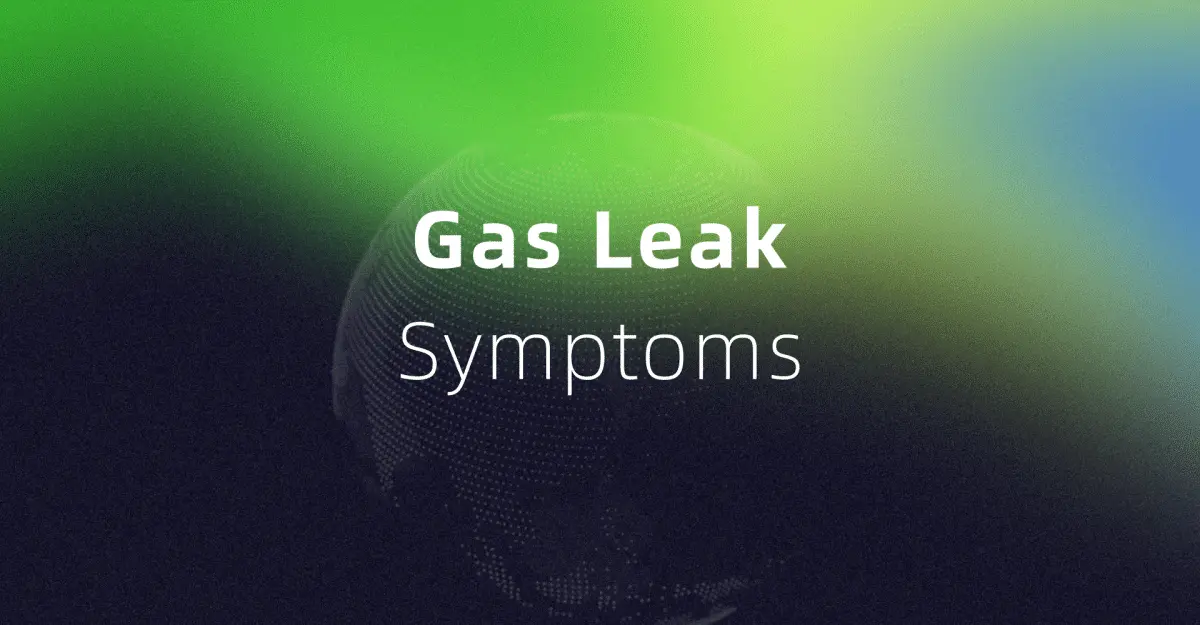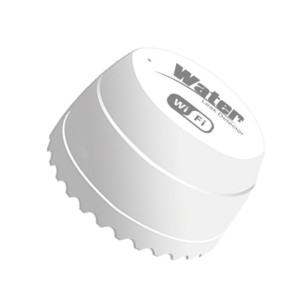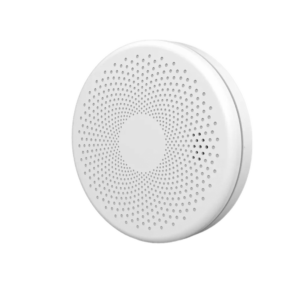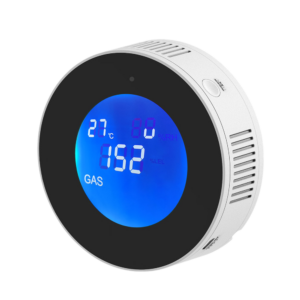Introduksjon: Hvorfor gasssikkerhet starter med bevissthet
Når det gjelder farer i hjemmet,En gasslekkasje er en av de mest stille og alvorlige trusleneyou can face. It often begins with subtle signs: a faint odor, a hissing sound, or even unexplained headaches. Unfortunately, many homeowners don’t realize the severity until it’s too late.
I denne artikkelen skal vi hjelpe deg å forstå:
- Det mestevanlige symptomer på gasslekkasje
- Hvordan gjenkjennesymptomer på naturgasslekkasjetidlig
- Hva du skal gjøre hvishuset ditt lukter bensin
- Og hvordan man skal reagere pålangsomme gasslekkasjerfør de eskalerer
💡Tips for hjemmesikkerhetÅ vite hva ennaturgasslekkasje lukter somog hvordan man kan handle rasktredde liv og eiendom.
1. Hva forårsaker gasslekkasjer i boliger?
Før vi dykker ned i symptomene, la oss se på hva som forårsaker gasslekkasjer i husholdninger:
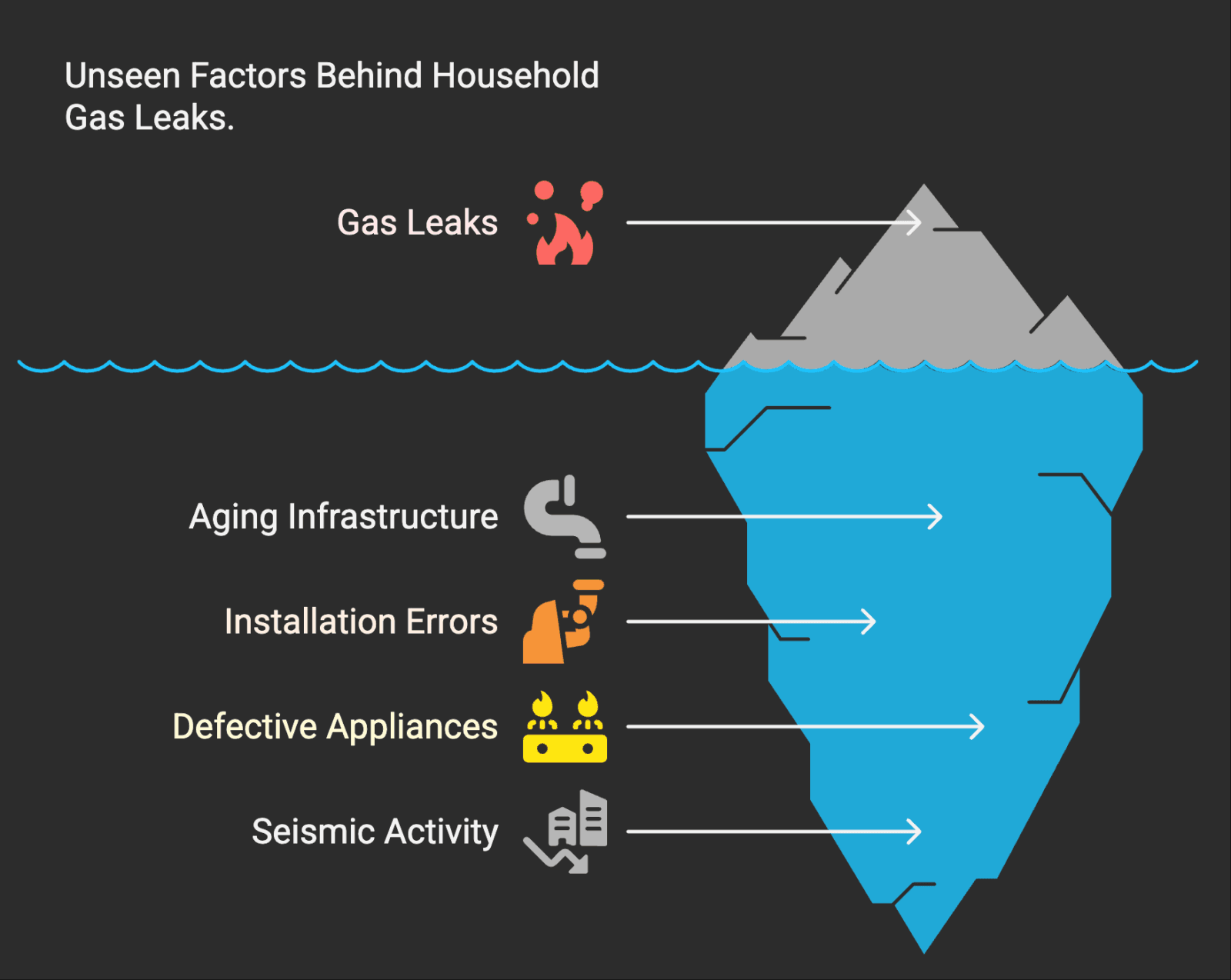
- Aldrende gassledninger eller rørdeler
- Feil installasjon av apparater
- Defekte gassovner, varmeovner eller peiser
- Skadede gassregulatorer eller ventiler
- Jordskjelv eller fundamentforskyvning som påvirker rørledninger
Mensnaturgass er luktfri, tilsetter forsyningsselskaper et kjemikalie som kallesmerkaptanfor å gi den en særegen lukt – ofte beskrevet sområtne egg– for å varsle beboere om potensielle lekkasjer.
2. Vanlige symptomer på gasslekkasje i hjemmet
Enten det er enlangsom gasslekkasjeeller en mer alvorlig hendelse, vil kroppen og miljøet ofte visetidlige varseltegn.
A. Fysiske symptomer hos mennesker og kjæledyr
Dette er blant de første indikatorene på at noe er galt:
| Symptom | Hvorfor det skjer |
|---|---|
| Hodepine | Oksygenforskyvning forårsaket av gass |
| Kvalme eller svimmelhet | Innånding av lave nivåer av naturgass |
| Tretthet eller døsighet | Gass påvirker oksygennivået og årvåkenheten |
| Irritasjon i øyne/hals | Mulig opphopning av forurensninger |
| Kortpustethet | Spesielt for de med luftveisproblemer |
| Kjæledyr som oppfører seg uvanlig sløvt | Dyr er ofte mer følsomme for gasslekkasjer |
🛑 Hvis flere familiemedlemmer eller kjæledyr opplever disse symptomenesamtidig innendørs, kan det tyde på engasslekkasje.
B. Miljø- eller apparatsymptomer
Visuelle og auditive ledetråder kan være like avslørende:
- Huset lukter bensin– spesielt i nærheten av komfyren, ovnen eller gassmåleren
- Hvæsende eller plystrende lydernær rør eller gassledninger
- Døde stueplanteruten noen åpenbar grunn
- Støv som blåser nær gassledninger, selv når det ikke er vind
- Pilotlysene slukkes ofte
- Brennere med oransje/gul flammei stedet for blå
Dissesymptomer på naturgasslekkasjebør aldri ignoreres. Selv om lukten er svak eller sporadisk, kan den signalisere enlangsom gasslekkasjesom forverres over tid.
3. Hvordan lukter en naturgasslekkasje?
Det mest identifiserbare tegnet på en gasslekkasje erdistinkt luktlaget av merkaptan, et tilsetningsstoff som lukter som:
- Råtne egg
- Svovel
- Kloakk
- Muggen kål
Selv om noen kan bli «neseblind» for lukten over tid, er det avgjørende åvær oppmerksom på plutselige, uvanlige lukter, spesielt i nærheten av apparater eller gassledninger.
🧠Profftips:Hvis du er usikker,gå utog pust inn frisk luft. Når du kommer inn igjen, vil du bedre oppdage eventuell gasslukt i rommet.
🛑 Hold deg rolig, vær trygg
Hvis du leser dette og allerede tenkerhuset ditt lukter bensin, ikke vent. Umiddelbart:
- IKKE tenn flammer eller bruk elektronikk
- Ventiler områdetved å åpne dører og vinduer
- Evakuer hjemmet ditt
- Ring strømleverandøren eller nødetatene utenfra
Neste omDel 2/3:
- Slik oppdager du langsomme gasslekkasjer med verktøy og sensorer
- Smarte gasslekkasjedetektorer du kan installere hjemme
- Hvordan produkter somGrus GasNet-CMkan varsle deg i sanntid
📌 Følg med og vær trygg – livet ditt kan avhenge av det.
4. Oppdage langsomme gasslekkasjer og beskytte hjemmet ditt
Not all gas leaks come with a dramatic smell or an audible hiss. In fact, the most dangerous leaks are oftenlangsom,stille, og bygge seg opp over tid – uten noen åpenbare advarselstegn.
La oss utforske hvordan du kanoppdage langsomme gasslekkasjer, rollen tilsmarte sensorer, og hvorfor alle moderne hjem bør ha engassdeteksjonssystempå plass.
4.1 Hva er symptomer på langsom gasslekkasje?
Alangsom gasslekkasjerefers to a small, continuous leak that may not trigger immediate physical symptoms or strong odors. However, over time it can accumulate to dangerous levels.
🐢 Typiske tegn på en langsom lekkasje:
- Intermitterendehodepine eller kvalmehjemme, men ikke ute
- Lett lukt av råttent eggsom ser ut til å "komme og gå"
- Inkonsekvent ytelse fra gassbrenneren
- Uforklarlig økningi gassregningen din
- Gassdrevne apparaterføles varmere enn forventetnår den er av
Disse kan være lette å avfeie – men å ignorere dem kan føre til at gass samler seg, noe som øker risikoen forkvelning eller eksplosjon.
4.2 Verktøy for å oppdage gasslekkasjer hjemme
Foruten nesen din, er det flereverktøy og enhetersom kan bidra til å bekrefte eller utelukke en gasslekkasje:
| Verktøy/enhet | Funksjon |
|---|---|
| Såpe- og vanntest | Det dannes bobler over lekkasjer i rørdeler eller rørskjøter |
| Håndholdte gasslekkasjedetektorer | Sniffere som oppdager metan- eller propangass |
| Smarte gasslekkasjesensorer | Varsler i sanntid via WiFi eller mobilapp |
| Smarte målere for strømforsyning | Uvanlig forbruk kan tyde på en skjult lekkasje |
🧪 DIY test: Mix water with dish soap and apply to suspected gas connections. If bubbles form, you may have a leak.Ikke tenn noeunder denne testen.
5. Hvorfor alle hjem bør ha en smart gassdetektor
Å utelukkende stole på lukt eller symptomer er risikabelt – spesielt for husholdninger med:
- Eldre personer
- Barn
- Kjæledyr
- Søvnapnépasienter på oksygenmaskiner
- Flere gassapparater
Gå inn: DenGrus GasNet-CM Smart gass- og CO-detektor
Denne alt-i-ett-enheten er designet for åovervåke naturgasslekkasjer, karbonmonoksid og luftkvalitetDen tilbyr:
- Sanntidsdeteksjon døgnet rundtav metan, propan og CO
- Høylytt lokaltalarmer + varsler fra mobilappen
- WiFi-tilkobling(ingen hub nødvendig)
- SmartThings og Alexa-integrasjon
- Kompakt og diskret design – ideell for kjøkken, kjeller eller garasje
--- title: "How Grus GasNet-CM Works" --- flowchart TD; A[GasNet-CM Sensor] --> B[Detects Gas or CO Levels] B --> C[Triggers Buzzer + LED Warning] B --> D[Sends Alert to Grus App] D --> E[Push Notification to User Phone] E --> F[User Takes Action or Calls Utility]
📍Plasseringstips:Installer GasNet-CM i nærheten av gassfyrte apparater, spesielt kjøkken, vaskerom og kjellere.
6. Integrer smart gassovervåking i hjemmets sikkerhetssystem
For homeowners with smart homes or energy systems already in place, smart gas detection is a natural (and necessary) extension.
Med Grus smarte energimålere og termostater som allerede optimaliserer HVAC og elektrisitet, legger de til enGasNet seriesensorhjelper:
- Overvåk usynlige risikoer (gass, CO2)
- Motta varsler når du er borte fra hjemmet
- Skapeautomatiserte rutiner(f.eks. slå av HVAC når det oppdages en lekkasje)
- Legg til et ekstra lag med sikkerhet ved siden avrøyk- og vannsensorer
✅ For boliger med flere etasjer eller boliger med aldrende gassinfrastruktur, installasjonflere sensorersikrer full dekning.
7. Hva du skal gjøre hvis du mistenker en gasslekkasje + Siste sikkerhetssjekkliste
Gas leaks can be terrifying—but with the right response plan and proactive monitoring, you can protect your home and loved ones.
I denne siste delen skal vi dekke:
- Umiddelbare tiltak ved mistanke om lekkasje
- Når du skal ringe 112 kontra strømleverandøren din
- Forebyggende sikkerhetstips
- Hvordan bygge et komplett smart sikkerhetssystem med Grus
7.1 Sjekkliste for beredskap: Hva du bør gjøre akkurat nå
Hvis du mistenker eller bekrefter tegn på gasslekkasje—ikke få panikk, men handle raskt.
🛑 Gjør dette umiddelbart:
- Forlat bygningen umiddelbart.Ikke prøv å finne lekkasjen selv.
- Ikke bruk elektronikk, fyrstikker eller lightere.Selv å slå på en lysbryter kan forårsake en gnist.
- Åpne vinduer og dørernår du går ut for å hjelpe til med å lufte deg.
- Ring gassverket ditt eller 112 fra et trygt sted.
- Hold andre unnafra eiendommen inntil den er ryddet av fagfolk.
🧯DO NOTGå inn i hjemmet ditt igjen inntil gassselskapet eller brannvesenet bekrefter at det er trygt.
7.2 Hvem du skal ringe i en nødsituasjon med gasslekkasje
| Situasjon | Kontakt |
|---|---|
| Du lukter gass innendørs | Lokal nødlinje for gassforsyning |
| Du ser gnister, ild eller føler deg uvel | 911 (Nødetatene) |
| CO-detektoren er utløst | Brannvesen + evakuering |
| Mild lukt, usikker kilde | Rørlegger eller sertifisert rørlegger |
Lagre disse kontaktene på telefonen din og heng dem opp i nærheten av hovedgassmåleren din, slik at de er enkle å få tilgang til.
7.3 Forebyggende tips for å unngå fremtidige lekkasjer
Selv om du aldri har hatt en lekkasje før, kan proaktive tiltak redde liv:
- Planlegg årlige inspeksjonerav alle gassapparater
- Oppgrader til smarte detektorermed døgnkontinuerlig overvåking
- Lær opp alle i husstanden dinHvordan lukter gass og hvordan man skal reagere
- Merk gassavstengningsventilen dinog lære familiemedlemmer hvordan de bruker den
- Vurder å kombinere gassdeteksjon medRøyk-, CO- og vannlekkasjesensorer
🏡 Hold deg beskyttet med Grus GasNet-serien
Sikkerhetsøkosystemet Grus GasNet ble utviklet for å hjelpe huseiere som degoppdage, reagere på og forhindre gassrelaterte nødsituasjoner.
🛒 Grus Smarte sikkerhetsprodukter:
| Produkt | Viktige funksjoner |
|---|---|
| GasNet-CM | Registrerer naturgass + CO, WiFi-varsel, hørbar alarm |
| AquaNet-M | Kompakt versjon for mindre rom eller reisebruk |
| AquaNet-BD | Smart vannavstengning for lekkasjerelaterte risikoer |
| Grus Appintegrasjon | Sentral overvåking av alle sikkerhetsenheter i hjemmet |
Protect your home from both gas and carbon monoxide leaks with our dual smart detector set. Enjoyopptil 10 % rabattI en begrenset periode har sinnsroen aldri vært så overkommelig.
Handle Black Friday-pakken →